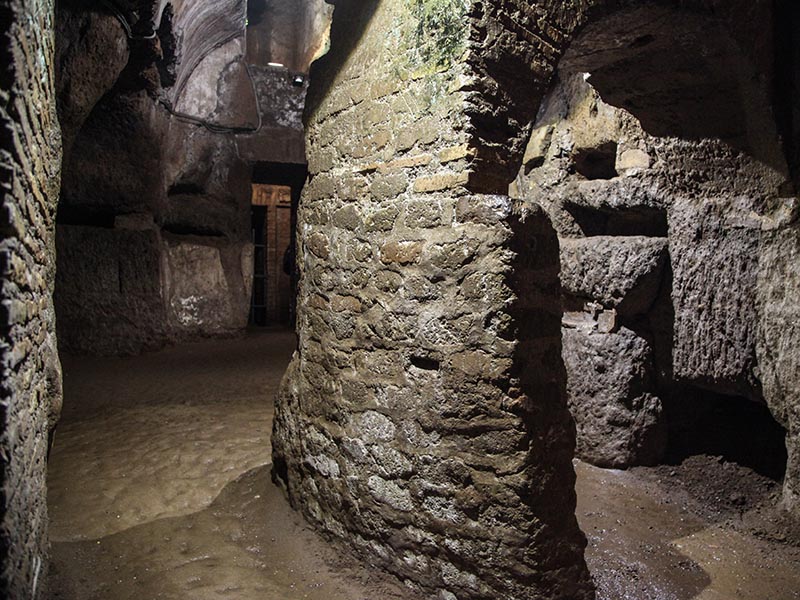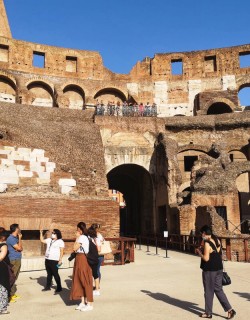Concealed deep within the bedrock of the Roman countryside, a vast underground city of the dead lies dormant awaiting discovery. The catacombs of Domitilla are remarkably well-preserved, and offer a vivid window into the distant world of antiquity. Discover why the catacombs have exerted such a pull on the imagination of visitors to Rome for centuries.
A Secret Ceremony in the Forgotten Land of the Dead

Rome, 1716. A sombre group of hooded men edge their way forward into the darkness, the flickering light from their flaming torches throwing crazy patterns onto damp stony walls. Inching through the catacombs of Domitilla's maze-like network of tunnels, they pass endless stacks of niches reaching all the way to the ceiling, each containing piles of ancient bones awaiting resurrection. Finally the party reached a small cubicle opening outwards from the narrow corridor, the burial chamber of a family rich enough to enjoy the peace of their own private sepulchre.
Draping an altar in white cloth arrayed with golden chalices and crosses, the men began an eerie candlelit ceremony. As they sang a hymn in praise of God, the sober harmonies of their voices must have reverberated strangely in a space never whose silence was never meant to be broken. But why were they celebrating such a lonely mass in the dark corridors of the catacombs, far from prying eyes deep beneath the countryside of southern Rome?

The answer is quite literally written in blood. Scrawled on the walls of the small cubicle in the actual blood of the celebrants, a uniquely macabre graffiti gives thanks to a 'memorable victory.' The news had just come through that Christian troops had defeated the massive army of the Ottoman Turks sweeping into eastern Europe. For decades the Turkish forces had been menacing Europe in a bloody war, seeking to conquer the continent and expand their empire.
For the Christian communities of Italy anxiously awaiting updates from the north, it appeared that their prayers had been answered. The victory was attributed to the invincible power of long-dead martyrs watching over the soldiers and guiding them to success, and so the Roman priests descended to their eternal resting places to offer them thanks and praise. They believed that the earliest Christian communities had celebrated masses here too, hidden from the view of persecuting pagans. And so they were embarking on a journey through time as well as space, trying to recreate the distant rites and ceremonies of their faithful forebears.
A Brief History of the Catacombs – Tunnels Into the Past
Today the mysterious world of the dead into which the pious group descended 300 years ago constitutes the largest and best-preserved catacombs in all of Rome. Carved out of the soft tufa rock, layer upon layer of labyrinthine tunnels stacked from floor to ceiling with narrow niches contain an inexhaustible supply of ancient Christian bones, macabre reminders of Rome's role as cradle of Christianity in the Imperial Roman world. Small rooms or cubicles open out from the maze to reveal the final remaining places of families rich enough to enjoy the peace of private sepulchres. Strange symbols are engraved into their tombs – fish and anchors, secret signs that signified to the initiated the presence of Jesus Christ, messiah and savior of the Christian faith.

This hidden world was rediscovered in the 16th -century by Antonio Bosio, a man known as the 'Columbus of the Catacombs' for his intrepid adventuring spirit. To memorialize his subterranean explorations by him, Bosio carved his name by him into the wall of the catacombs, still visible today. Bosio in fact got lost for three days down here in search of the lost origins of Christianity, and its easy to see why even today, even with the aid of electric light illuminating the spooky way down towards the center of the earth. But what exactly is this eerie underground land of the dead doing buried beneath the Roman countryside?
 When it came to the appropriate interment of their dead, the pagans of the ancient Roman empire and the upstart Christian communities that began to flourish in the city in the centuries after Christ's crucifixion had a fundamental difference of opinion: whilst the Roman pantheists hygienically reduced the bodies of their dead to ashes in funereal pyres, Christian belief in the resurrection of the body meant that they had to be buried whole to await their final call to heaven. 'Cemetery' actually means 'dormitory' in Greek, a place of temporary rest rather than death.
When it came to the appropriate interment of their dead, the pagans of the ancient Roman empire and the upstart Christian communities that began to flourish in the city in the centuries after Christ's crucifixion had a fundamental difference of opinion: whilst the Roman pantheists hygienically reduced the bodies of their dead to ashes in funereal pyres, Christian belief in the resurrection of the body meant that they had to be buried whole to await their final call to heaven. 'Cemetery' actually means 'dormitory' in Greek, a place of temporary rest rather than death.
As Christianity grew in popularity and pagan persecutions intensified, the bodies multiplied and there was a desperate need for more burial space. And so the ancients dug down. Romans from all walks of life were laid to rest here from as early as the 2nd century AD, making it one of the oldest Christian cemeteries in the world. When the cemetery was finally abandoned in the 9th -century by the city's ever-dwindling population after a devastating earthquake, 26,000 tombs spread over 17 kilometers of tunnels concealed the decaying remains of more than 150,000 souls - a population that dwarfs many modern cities.
A Roman Aristocrat, her Eunuchs and an Underground Church
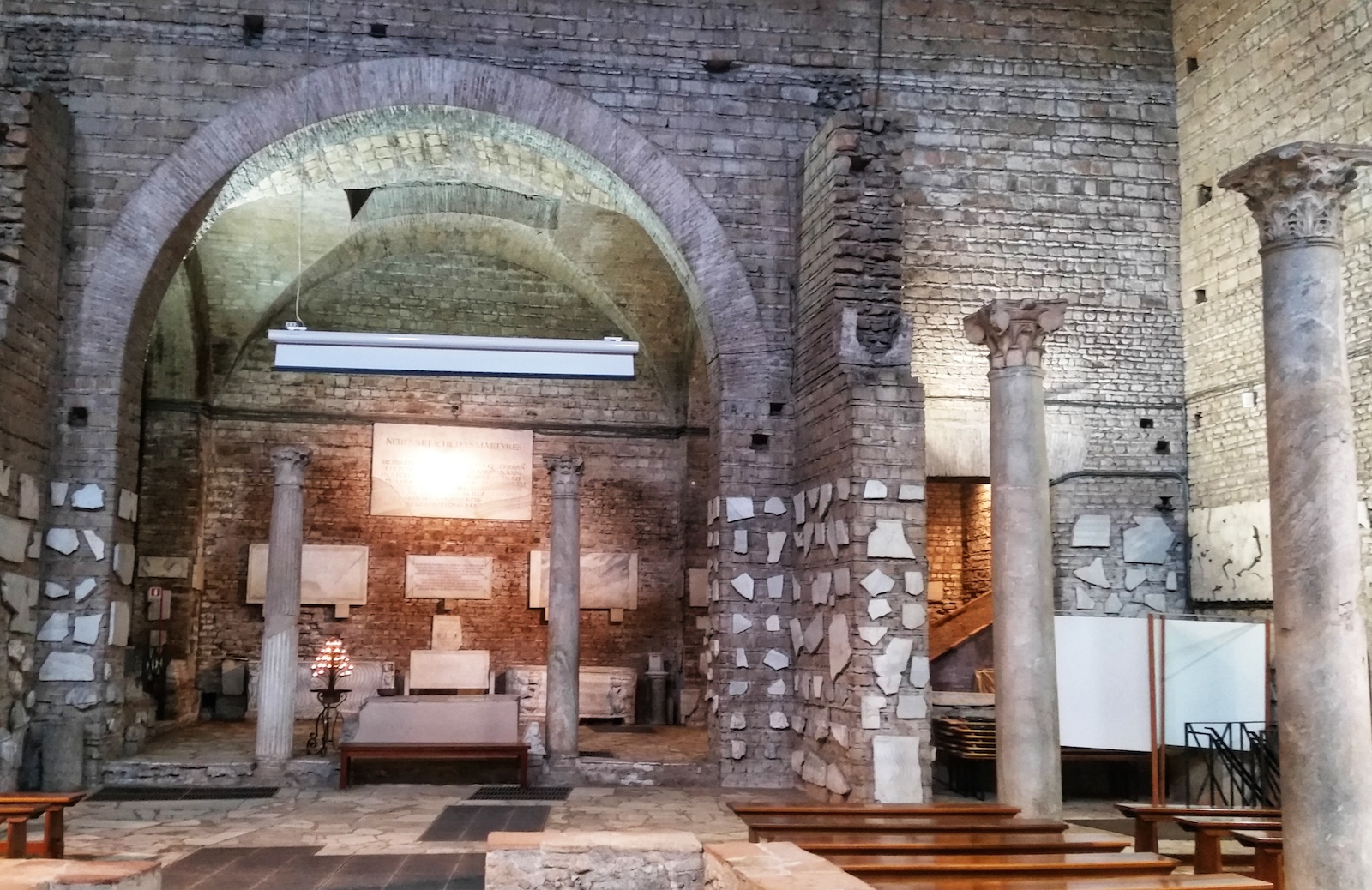
The catacomb of Domitilla takes its name from the aristocratic Roman matron Flavia Domitilla, granddaughter of the emperor Vespasian ((builder of the Colosseum) and member of the powerful Flavian dynasty. The young Flavia dismayed her relatives by converting to Christianity at the exhortations of her eunuch servants Nereus and Achilleus, and suffered exile to the island of Ponza and martyrdom for her faith.
But Flavia still managed to do her new co-religionists a good turn, donating her property on the Via Ardeatina to the church as a space where Christians could be buried in peace, far from prying and persecuting pagan eyes. Although they were martyred for their role in Flavia's conversion of her, her eunuchs of her were not forgotten. To access this underground metropolis you have to embark on a spectacular subterranean descent, down through a 4th- century sunken basilica dedicated to Nereus and Achilleus.
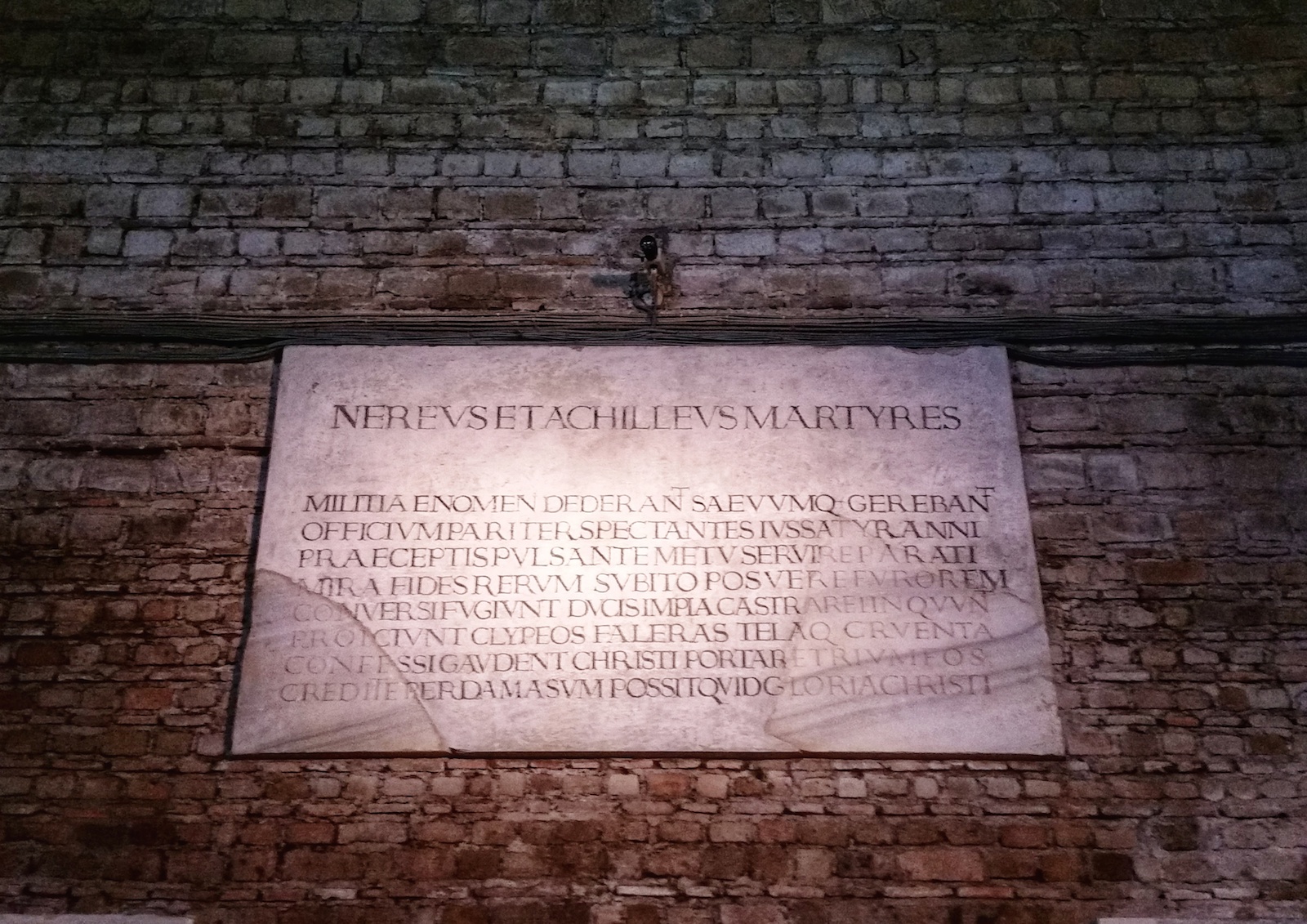
The church was built on the reputed site of their martyrdoms and ensured the popularity of the nearby catacomb, as Christians craved eternal proximity to the bodies of the holy martyrs. Although largely underground, the church is spectacularly flooded with light from massive windows high up on its walls, a luminous gateway to the land of the dead concealed beneath.
The Lost Art of the Early-Christian World
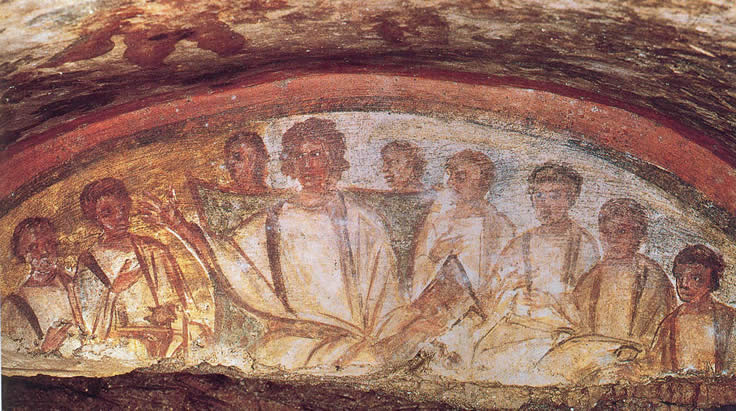
The catacomb's original nucleus was the private hypogeum of the Flavi family, pagans before Domitilla's conversion and her donation of the property on the Via Ardeatina to the Christian community. But whilst the catacombs were not the exclusive preserve of early-Christian communities, they certainly made them their own. In the changing decorations that adorn its underground, we can see the evolving status of the Christian religion in the first centuries after Christ.

The varied landscape of ancient religious custom is vividly represented on the walls of the catacombs where pagan and Christian imagery mingle freely: a fresco depicting the ancient myth of Amor and Psyche, who collect flowers surrounded by fluttering birds is definitively pagan, but take a few more steps and the images transform before our eyes.
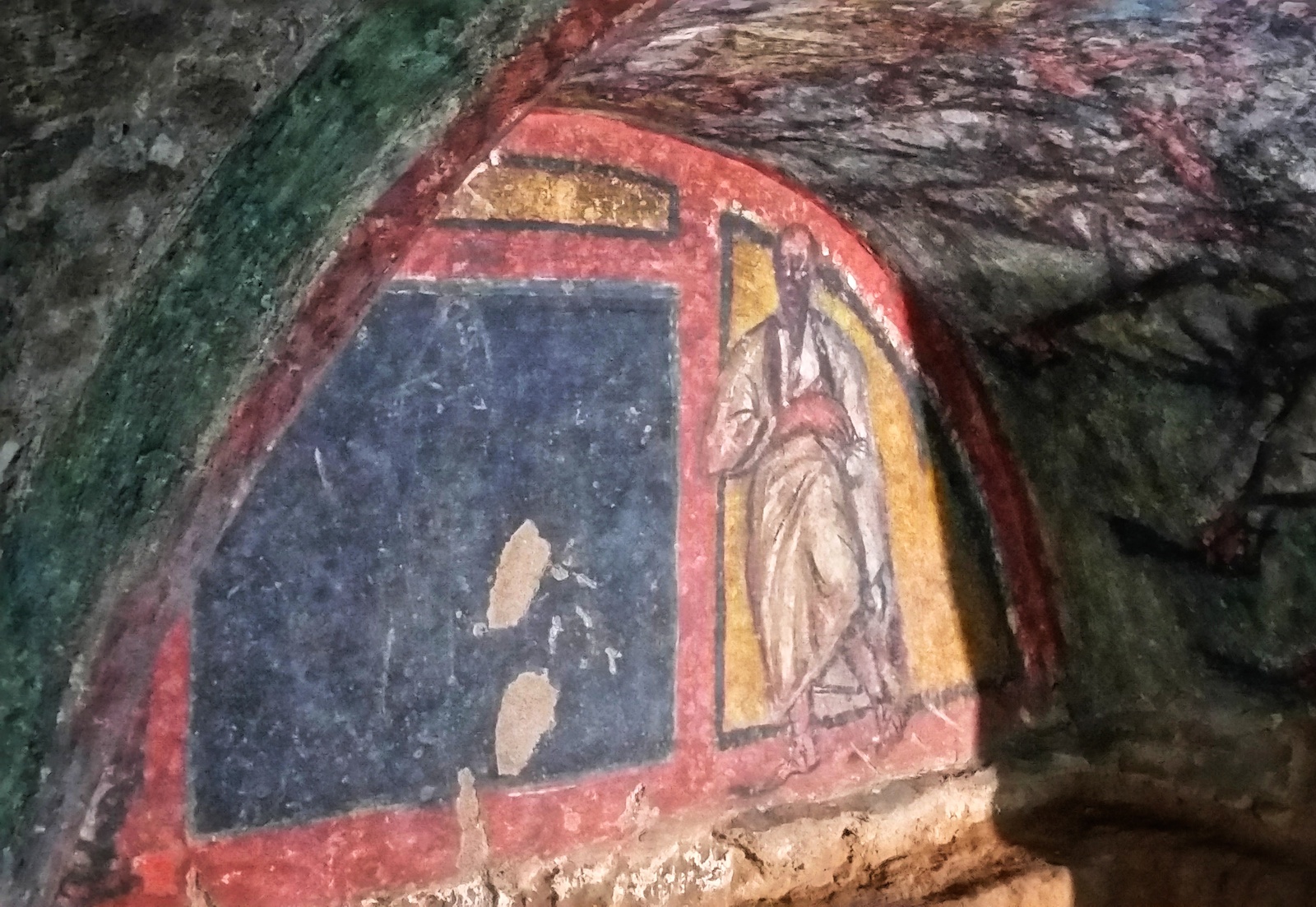
The entrance to the Christian area of the complex is marked by painted phoenixes, symbols of the Resurrection that was the centerpiece of the new faith. Secret Christian signs such as fish and anchors are engraved into countless tombs, and the decorations are truly breathtaking: here is a charming fresco of the twelve apostles, with Rome's patron saints Peter and Paul standing guard over the city's Christian community.
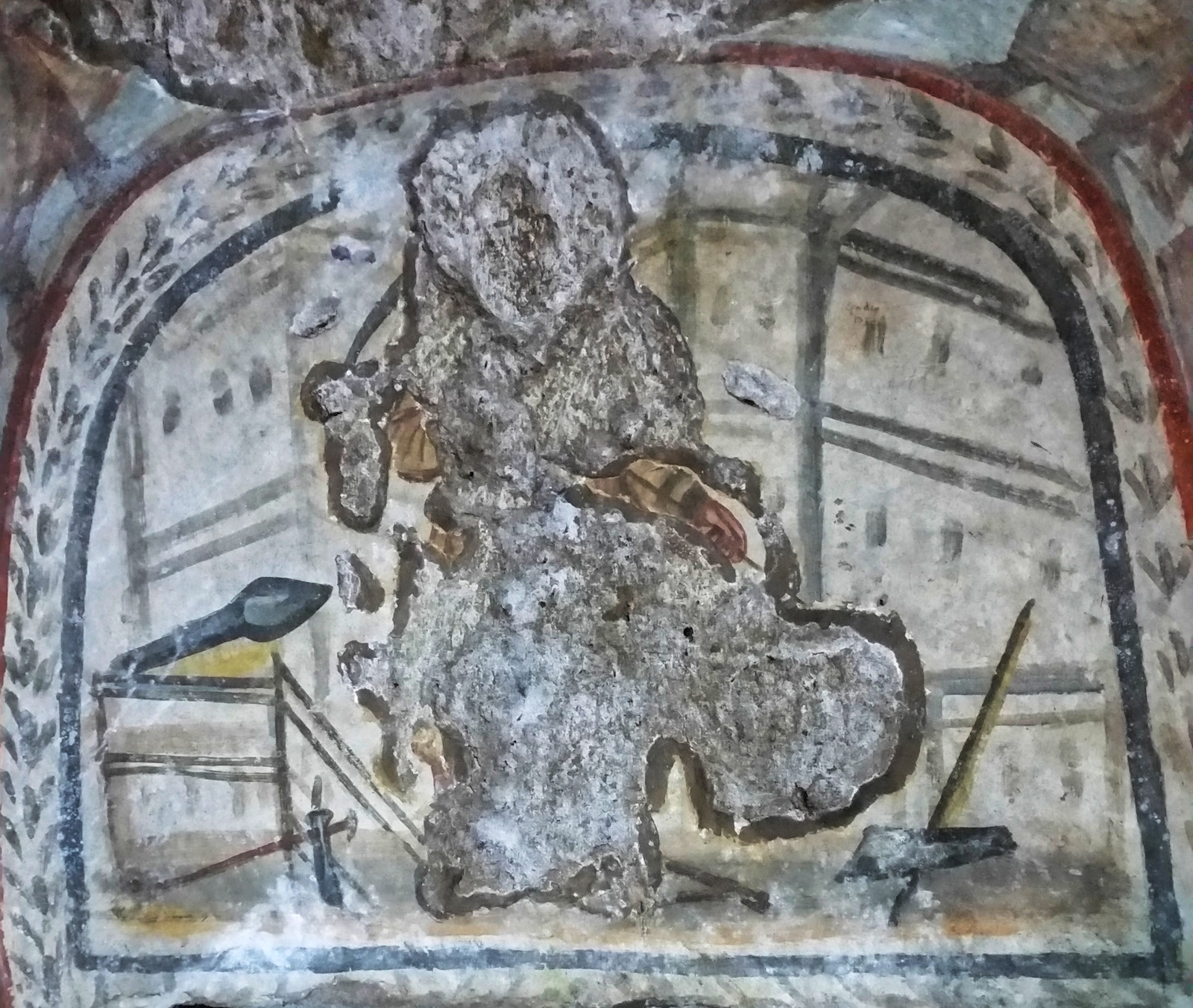 In a nearby painting Petronilla, St. Peter's apocryphal daughter, presents a dead woman to God in an unbeatable character reference at the gates of heaven. In perhaps the most evocative ancient fresco of all, we come face to face with Diogenes, one of the men whose task it was to dig out the catacombs for the secure burial of his fellow Christians. Here he appears grasping pickaxe and shovel, tools of his humble trade, a startlingly vivid and intimate insight into the human labor that went into creating the massive catacombs.
In a nearby painting Petronilla, St. Peter's apocryphal daughter, presents a dead woman to God in an unbeatable character reference at the gates of heaven. In perhaps the most evocative ancient fresco of all, we come face to face with Diogenes, one of the men whose task it was to dig out the catacombs for the secure burial of his fellow Christians. Here he appears grasping pickaxe and shovel, tools of his humble trade, a startlingly vivid and intimate insight into the human labor that went into creating the massive catacombs.
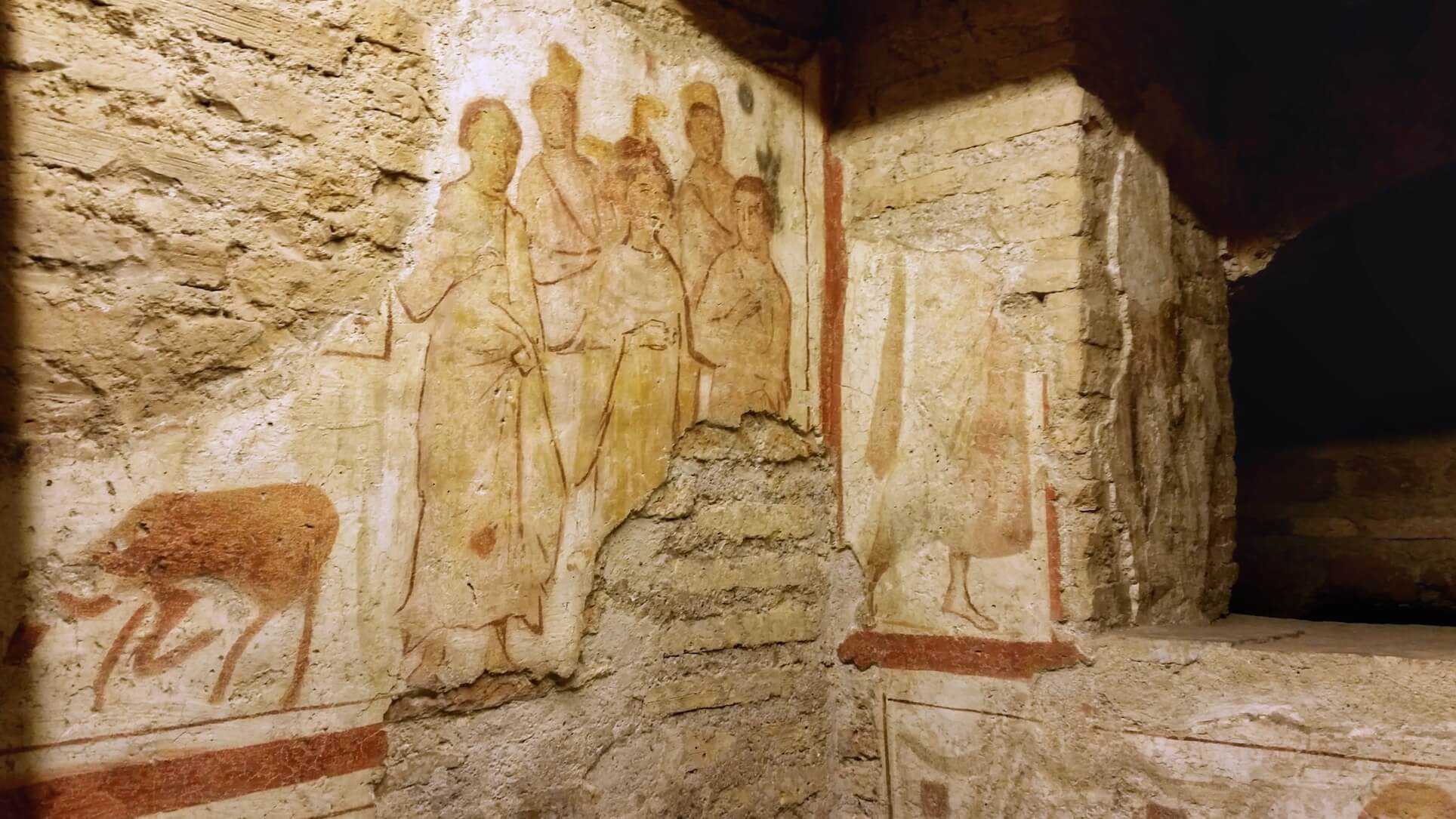
As we explore these eerie spaces today, we might not be motivated by the desire to relive the spiritual practices of those distant times like our pious predecessors, but like them we are also setting off on a journey into an enigmatic past. One chronicler wrote that 'all Rome was filled with wonder' at the revelation of this hidden city' in the 16th -century - now as then, the catacombs remain remarkably rich depositories of history where wondrous ancient narratives are embedded within every stone.
How to Get There, Tickets and More
The Catacombs of St. Domitilla are located in the southern outskirts of Rome on Via delle Sette Chiese, 282. They can be easily reached in half an hour from Termini station by taking a 714 bus to the stop Navigatori, followed by a 10 minute walk . Alternatively take the 716 from Piazza Venezia in the city centre, or the 218 from San Giovanni metro station.
The Catacombs are open from 9.00AM-12.00PM and 2.00PM-5.00PM every day except Tuesdays, when the site is closed. Tickets cost €8, which includes the cost of the guide (you must join one of the site's regular tours and cannot enter alone!) Children under 15 pay €5. For more information consult their website: Catacombs of Domitilla Official Site .
You can explore the catacombs by joining our Underground Rome and Catacombs tour to understand them in their historical context.

